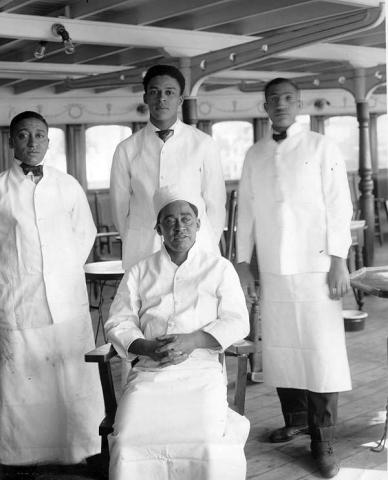
Today's #WorkerWednesday guests are the cooks and kitchen crew of the steamship Queen Anne, photographed on November 17, 1915 by William J. Conner. Conner was the company photographer for the Pusey and Jones Corporation, the shipbuilding company that also built the Queen Anne.
This item is part of Hagley Library's Pusey and Jones Corporation photograph collection (Accession 1972.350). Pusey and Jones was founded in 1848, and built ships and machines in Wilmington, Delaware. In its initial operations, the firm produced general machinery and steam engines and did a variety of repair work. The company established a marine department in 1853 that engaged in shipbuilding.
In 1867 a paper machinery department was created that made agitators, beaters, calendars, dryers, and an array of machines for the paper industry. Meanwhile the general machinery department continued its production of industrial presses, boilers, pumps, and various heavy machinery for a variety of customers.
By 1891 the company had expanded, according to "Delaware's Industries: An Historical and Industrial Review," to a plant of over eight acres and ten buildings (boiler, smith and machine shops, a pattern house, storage houses) and a workforce of 900 employees.
Shipbuilding, however, was the largest part of Pusey & Jones's business. The company was widely known in the area of pleasure craft and built these notable yachts: Cambriona, Nakhoda, Onika, Rene, Savarona, among others. In the last robust years of the company during World War Two, Pusey & Jones was engaged in building 19 cargo ships for the U.S. Maritime Commission and hopper dredges for the U.S. Engineer Department. Pusey and Jones built almost five hundred ships in its company lifespan.
This collection has not been digitized in its entirety, but our Digital Archive offers a selection of over 2,200 images dating from the 1860s to the 1950s. To view it online now, just click here.

